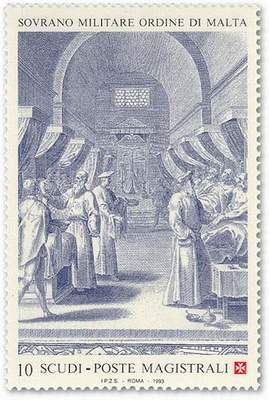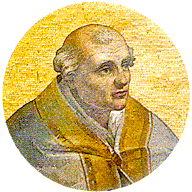A pious request and
desire should meet with satisfaction and fulfillment. For as much as
of your affection you have requested that the Xenodocheum, which you
have founded in the City of Jerusalem, near to the Church of the Blessed
John Baptist, should be supported by the Apostolic See, and fostered by
the patronage of the Blessed Apostle Peter. We therefore, Being much
pleased with the piety and earnestness of your Hospital work
(Hospitalitas), do receive your petition with paternal kindness, and do
ordain by virtue of the present decree that the House of God the
Xenodocheum shall always be under the guardianship of the Apostolic See,
and the protection of the Blessed Peter.
All things therefore that
have been acquired for the said Xenodocheum by your solicitude and
perseverance, for the support of pilgrims, and for the needs of the
poor, whether in the Church in Jerusalem or in the parishes of churches
in the territory of other cities, or have been presented by faithful
men, no matter who, or may be presented in the future by the Grace of
God, or may happen to be acquired by other lawful means, and whatsoever
things have been granted, by our venerable brethren the Bishops of the
Church in Jerusalem, either to you or to your successors and to the
brethren there occupied in the care of the pilgrims, we decree shall be
held forever in peace and undiminished.
Moreover we ordain that
the Tithes of your produce. where so ever collected at your charge and
by your labour, shall be held and possessed by your Xenodocheum,
notwithstanding the opposition of the Bishops and of the episcopal
officers.
The donations also, which
pious Princes have made to the said Xenodocheum from taxes and other
imposts, we decree shall be held confirmed.
And at your death, who
art now the overseer (provisor) and Provost of that place, no one shall
be appointed there by subtlety or intrigue or violence, but only he whom
the professed brethren there shall provide and elect in
accordance with God's will.
Moreover all honours or
possessions, which the said Xenodocheum at present holds either beyond
or on this side the sea, that is to say in Asia or in Europe, or those
which in the future by the bounty of God it shall obtain, we confirm
them to you and to your successors, who shall be devoting themselves to
hospital work with piety and earnestness, and through you to the said
Xenodocheum forever.
To this we further decree
that it shall be lawful for no man whatsoever rashly to disturb the said
Xenodocheum, or to carry off its possessions, or to retain those carried
off, or to lesson them, or to harass it with vexatious annoyances. But
let all its possessions be preserved undiminished for the sole use and
enjoyment of those for whose maintenance and support they have been
granted.
Moreover we decree that
the Xenodochea or Ptochea in the western parts at Bourg St. Gilles,
Asti, Pisa, Bari, Otranto, Tarento, and
Messina, known by the name and
style of Jerusalem shall remain as they are today under your rule and
disposition and those of your successors forever.
If therefore in the
future any person, either ecclesiastic or secular, knowing this chapter
of our ordinances should rashly attempt to contravene them, and if after
a second or third warning he shall not make satisfactory and suitable
amends, let him be deprived of his dignity, power and honour, and let
him know he stand accused before the tribunal of God for iniquity that
he has perpetrated, and let him be kept from the most Sacred Body and
Blood of our God and Redeemer our Lord Jesus Christ, and at the Last
Judgement let him undergo the severest punishment. But upon all those
dealing justly towards the said place may the peace of our Lord Jesus
Christ rest, and here they may receive the reward of good conduct, and
before the universal Judge may enjoy the blessings of everlasting peace.
Amen. Amen.

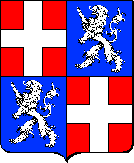
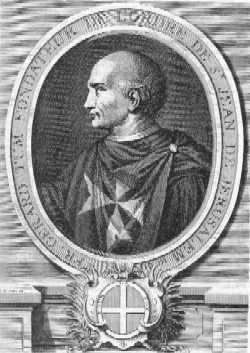

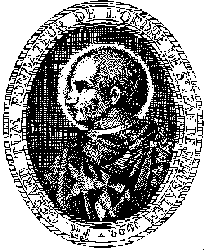
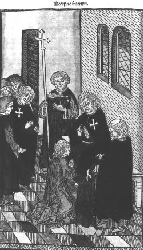
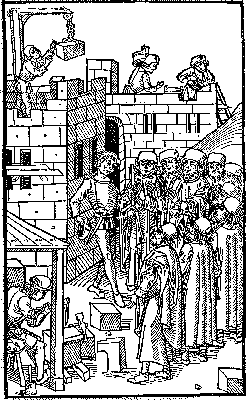
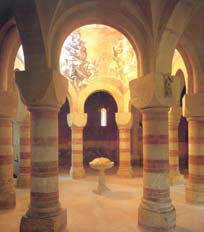




 I Paschal
Bishop of the Catholic Church have signed.
I Paschal
Bishop of the Catholic Church have signed. 
